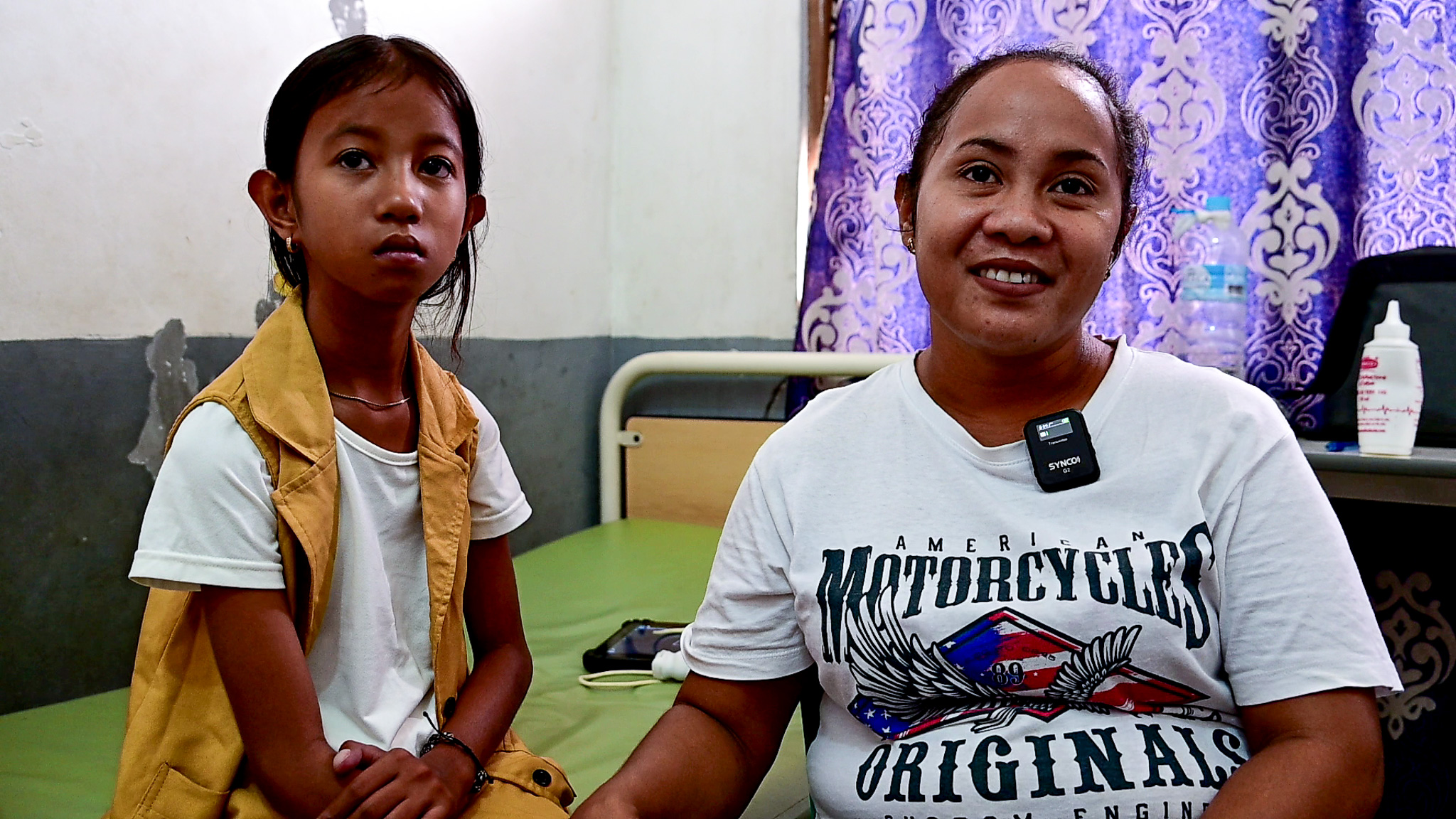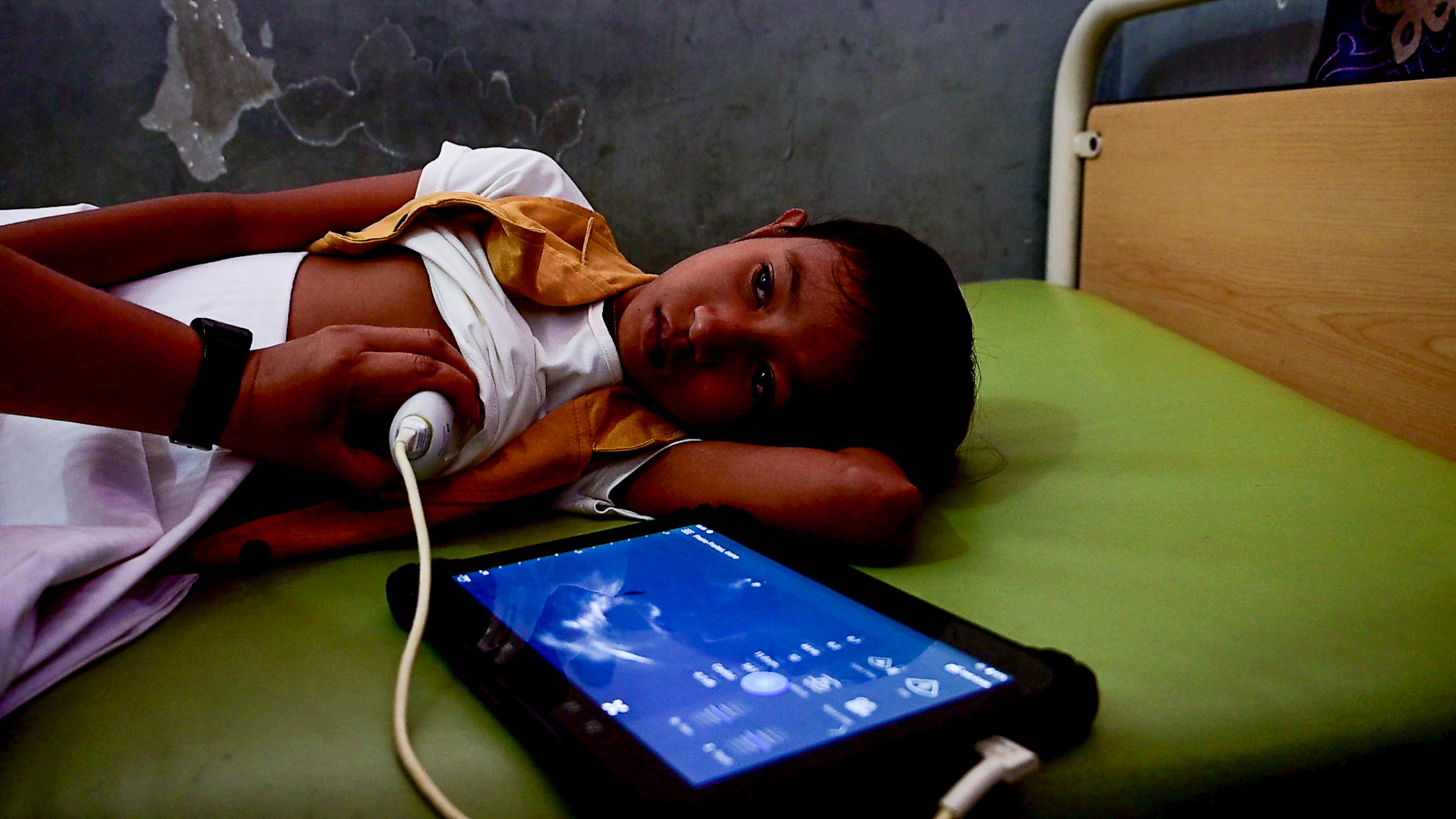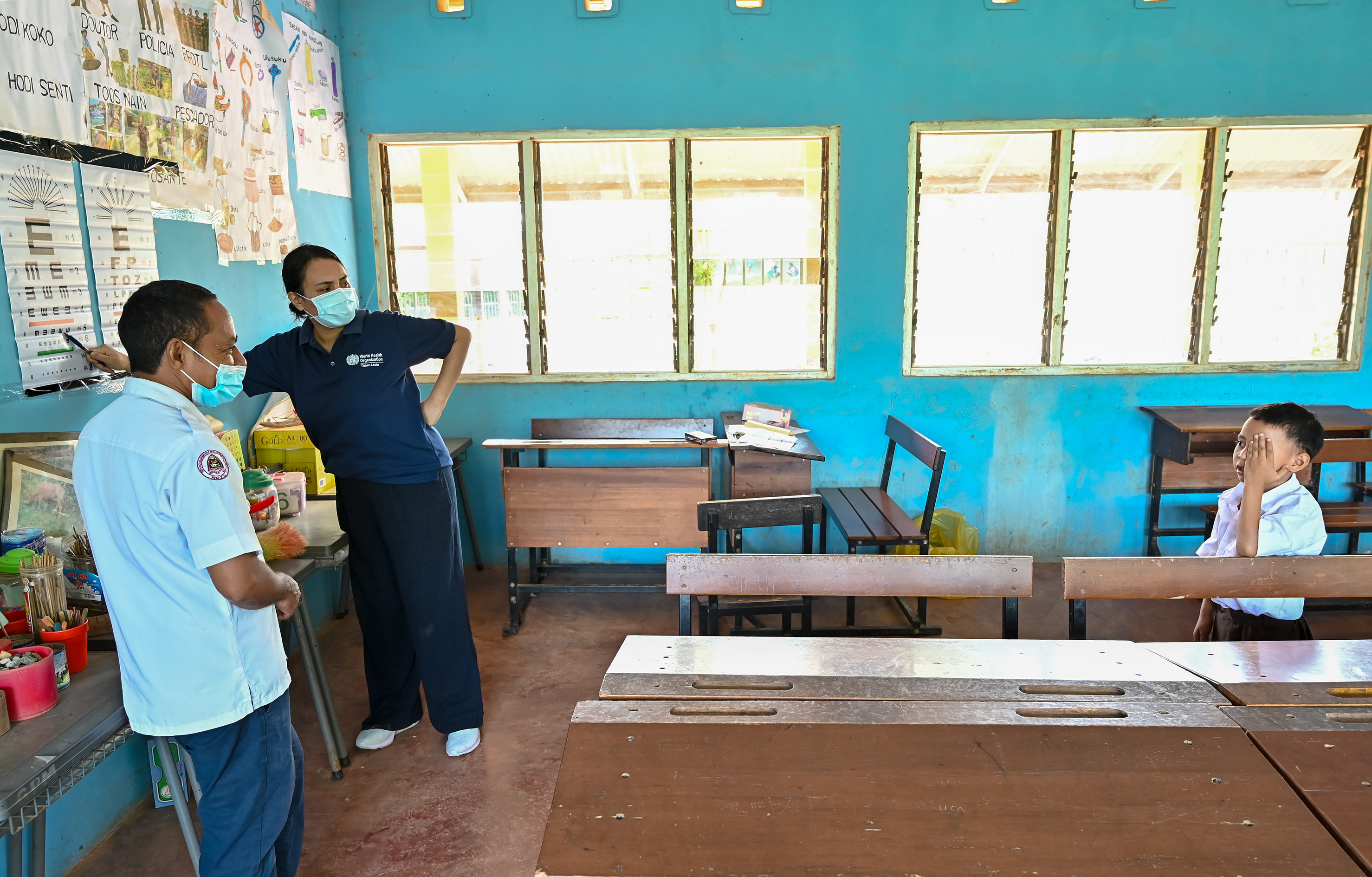Dili, July 15 — For almost nine years, Irene Pereira Freitas’s heart condition went largely unattended. Diagnosed as an infant with what doctors believed was rheumatic heart disease, her family—overwhelmed and told there was no surgical cure—quietly stepped away from the health system. Hospital visits stopped. Irene, now ten, spent most of her childhood indoors, often breathless and too weak to play with other children or her three siblings.
“She was just one when we found out,” says her mother, Laura Pereira (32), who lives in Bidau, a neighbourhood in Dili, Timor-Leste’s capital. “I’ve lived with that fear ever since.”

Irene and her mother are at the health centre for a check-up
It wasn’t until June this year, during a screening under the School-based Primary Health Care Package (PHCP), that her condition was flagged again. Referred to Community Health Centre Becora, Irene was seen by Dr Luisa Ramos, a general practitioner trained in detecting heart diseases.
While the family believed Irene had rheumatic heart disease, Dr Ramos noticed a different sign: clubbing of the fingers—where the fingertips are enlarged and the nails curve downward. “This is more commonly associated with a congenital heart condition,” she explained. “It’s often linked to long-term low oxygen levels in the blood.”
Beyond correcting the diagnosis, Dr Luisa issued a referral to HNGV, the country’s only tertiary hospital, and encouraged the family to return to CHC Becora for emergencies or follow-ups. For the first time in years, Irene is receiving regular care. “I’m truly grateful for school-based screening services like this,” said her mother, wiping away tears. “They’ve brought my daughter’s health back into focus.”

Irene is undergoing a heart check at CHC Becora
Stories like Irene’s are not uncommon as PHCP reaches more parts of the country. In Aileu, a seven-year-old girl with an unusually swollen head was among several hidden cases identified during routine screenings.
In Dili, general Dr Lucia D Costa recalled a moment during a screening session at EBF 4 Kuluhun School that stayed with her. “Everything seemed normal—until I looked into a first-grader’s ear with an otoscope,” she said. “To my shock, there was a live insect inside, already laying eggs.” The child was immediately referred to a CHC for treatment. “Without PHCP, it might have gone undetected until it became serious,” according to the doctor.
Thanks to PHCP, many children across Timor-Leste could be accessing healthcare for the first time, said Dr Arvind Mathur, WHO Representative. “The PHCP is helping identify and address health issues that can hinder learning, like vision or hearing problems, malnutrition, or undiagnosed disease,” he added. “It’s a gamechanger, because good health lays the foundation for better educational outcomes, lower dropout rates, and higher productivity in long run,” he said.

A child undergoing ear examination under the PHCP program in Liquica
Launched in March 2022, the PHCP is a core component of the broader Say No to 5S initiative—designed to tackle Starvation, Soil-transmitted helminthiasis, Skin diseases, Smoking, and Sugary/alcoholic drink consumption. PHCP is the first programme of its kind in Timor-Leste, aiming to reach 300,000 children across 1,300 schools by using schools as platforms to deliver health screenings, early detection, treatment, and prevention.
Trained health workers and teachers conduct screenings together, identifying children in need and referring complex cases to appropriate health facilities.
Screenings under PHCP began in November 2024, following extensive training efforts. Since then, the programme has reached 152,000 students. For 2025, the programme has been divided into three phases to ease logistics and supervision. Phase one covered Aileu, Dili, Liquica, and Lautem, followed by phase two — currently ongoing — in Ainaro, Ermera, Baucau, Bobonaro, and Viqueque. The third phase is set to roll out in August. To date, nearly 2,000 healthcare workers and 3,400 teachers have been oriented to support the implementation and continued expansion.

Initial screenings identified oral health as the most widespread concern, followed closely by malnutrition, undernutrition, and stunted growth. Skin conditions such as scabies were also common. Alarmingly, assessments revealed early exposure to smoking and alcohol among school-aged children.
The SN5S project, of which PHCP is a core element, is backed by US$ 7.8 million in funding from the Korea International Cooperation Agency (KOICA). It focuses on two key pillars: school health, led by WHO, and school-based nutrition, overseen by the World Food Programme (WFP), in partnership with the Ministries of Health and Education.
“We are proud of the successful rollout of the school-based Primary Health Care Package, which has helped identify and manage health issues among students,” said Youn Hwa Kang, Country Director of KOICA.
Monitoring visits have also surfaced less visible concerns, such as heart disease and mental health conditions, noted Dr Elisabeth Leto Mau, Director General for Primary Health Care. To better manage this growing volume of grassroots data, a digital system has been introduced using the Timor-Leste Health Information System (TLHIS).
“Sometimes even basic health services are out of reach for us,” said Josefa Da Silva, a mother from Liquica. “This programme has brought doctors closer to our children.”
Nurse Augusto De Jesus echoed the sentiment. “We’ve seen very good results,” he said. “This programme must continue.”
